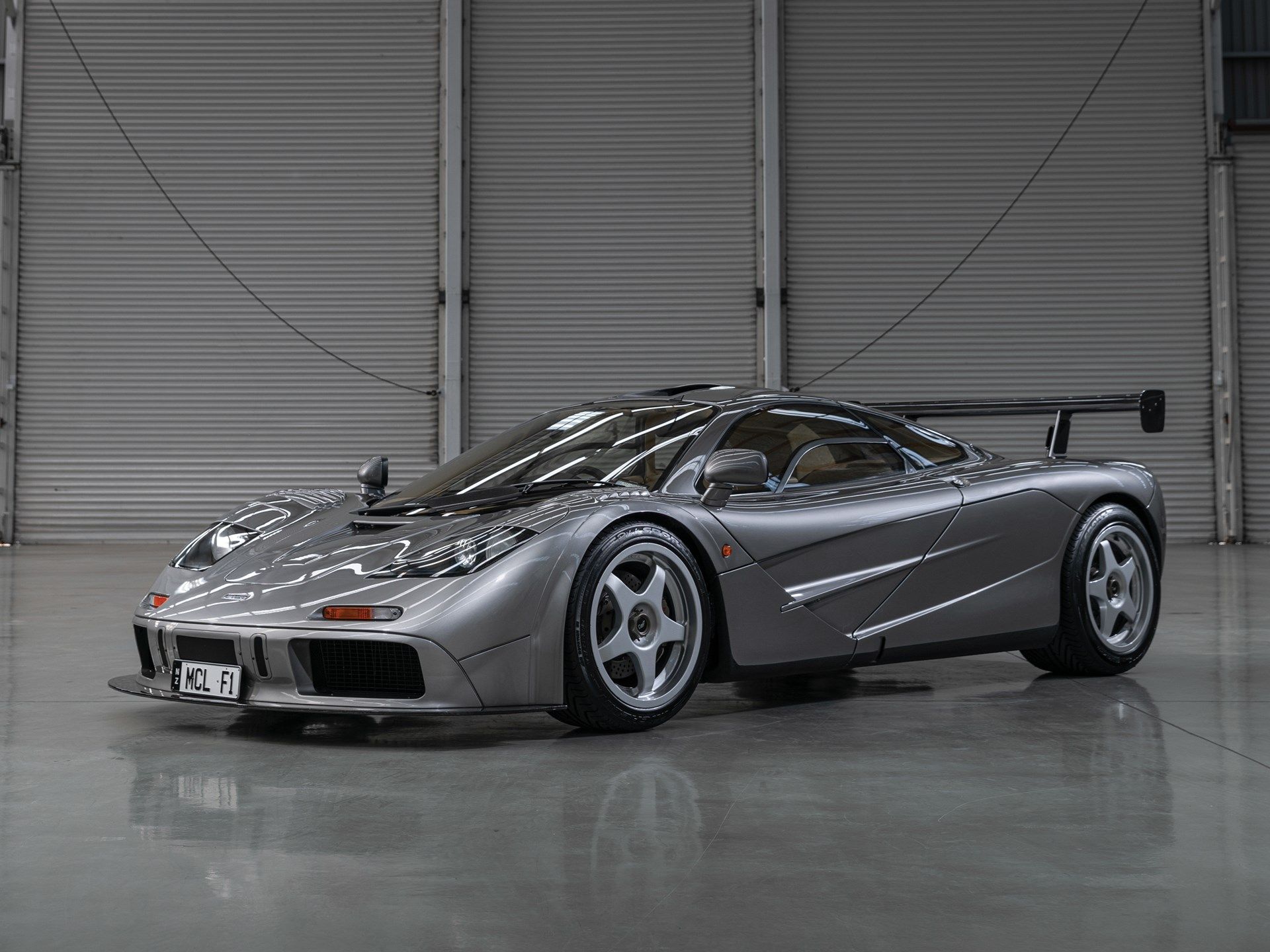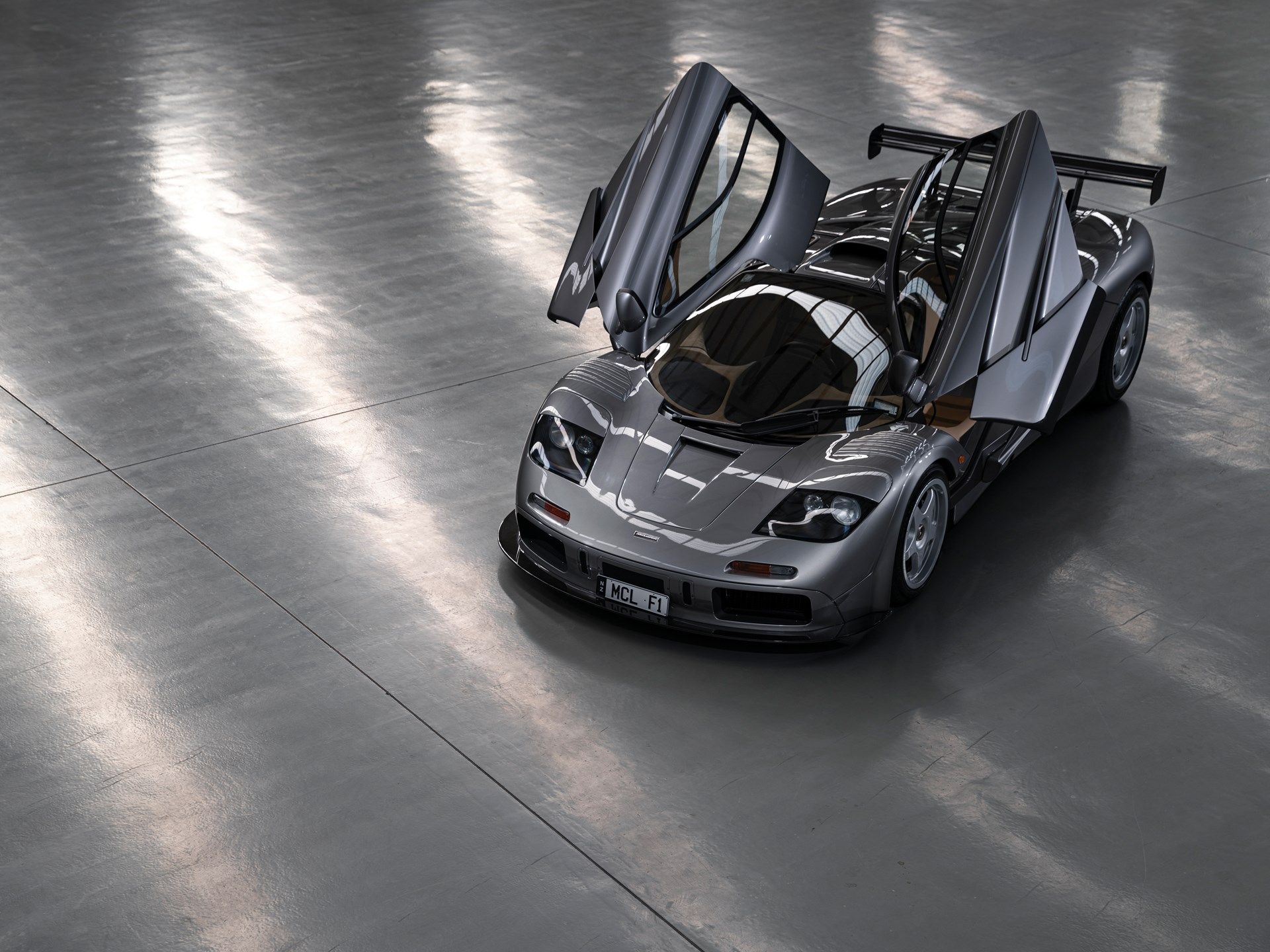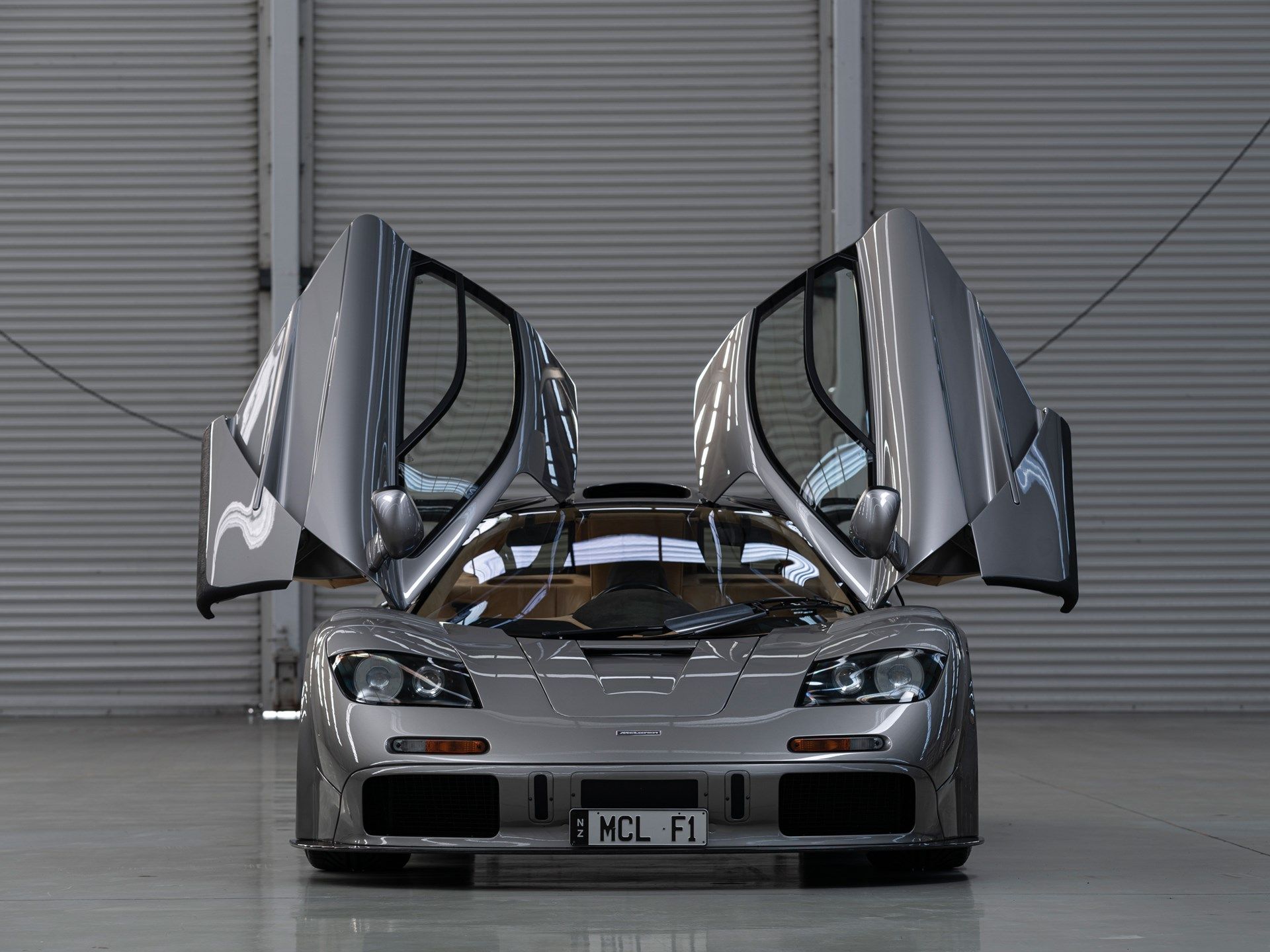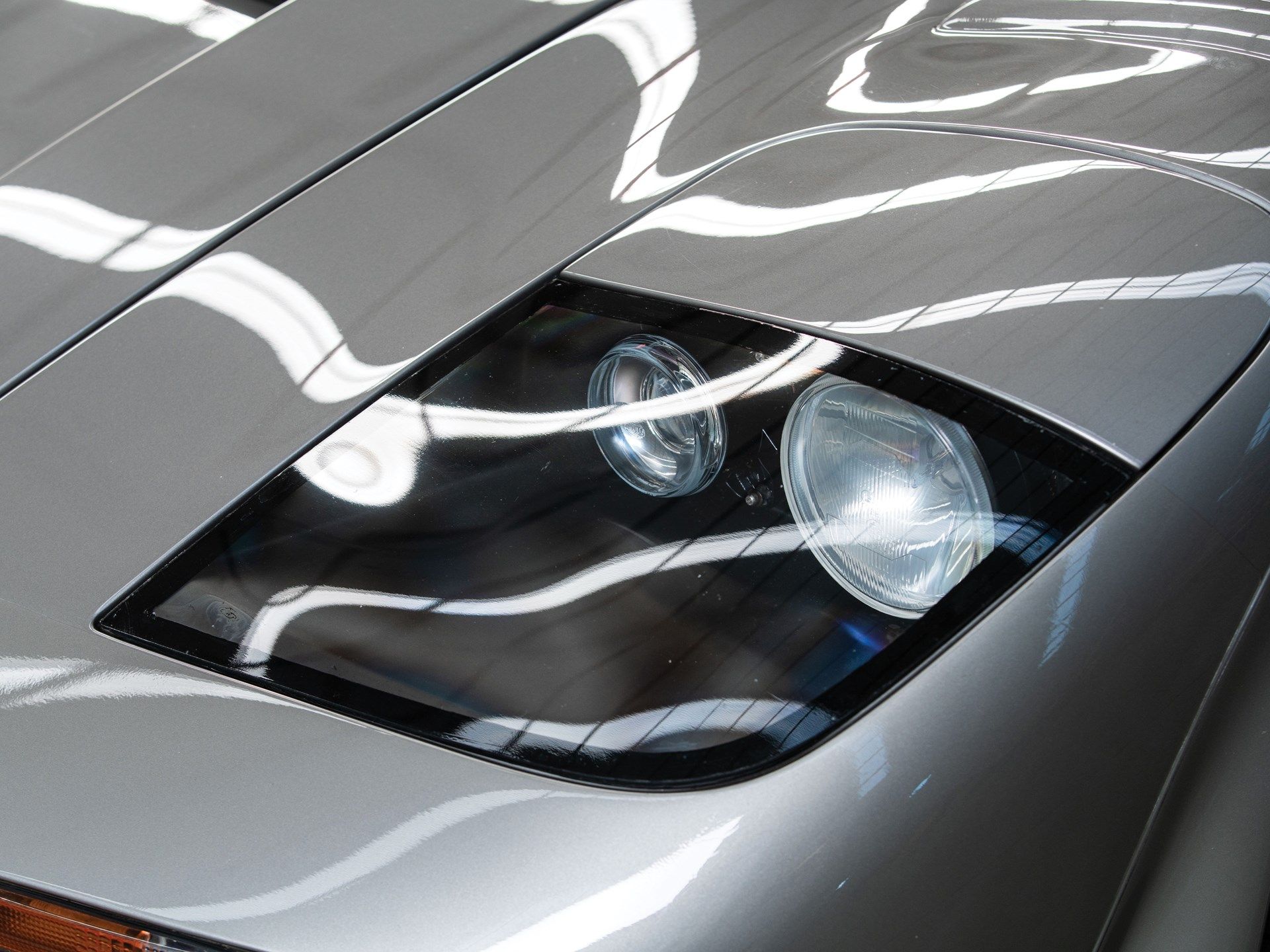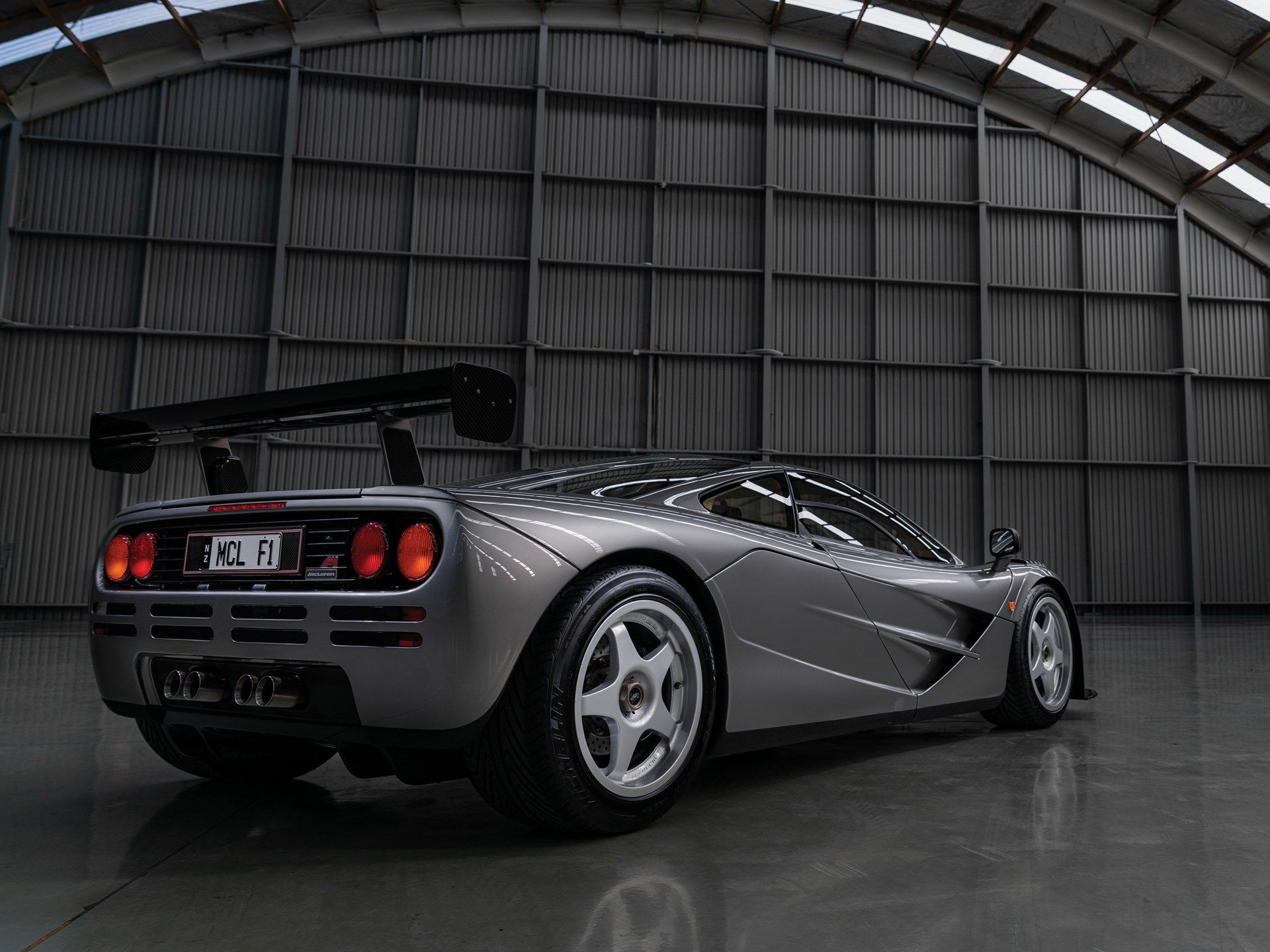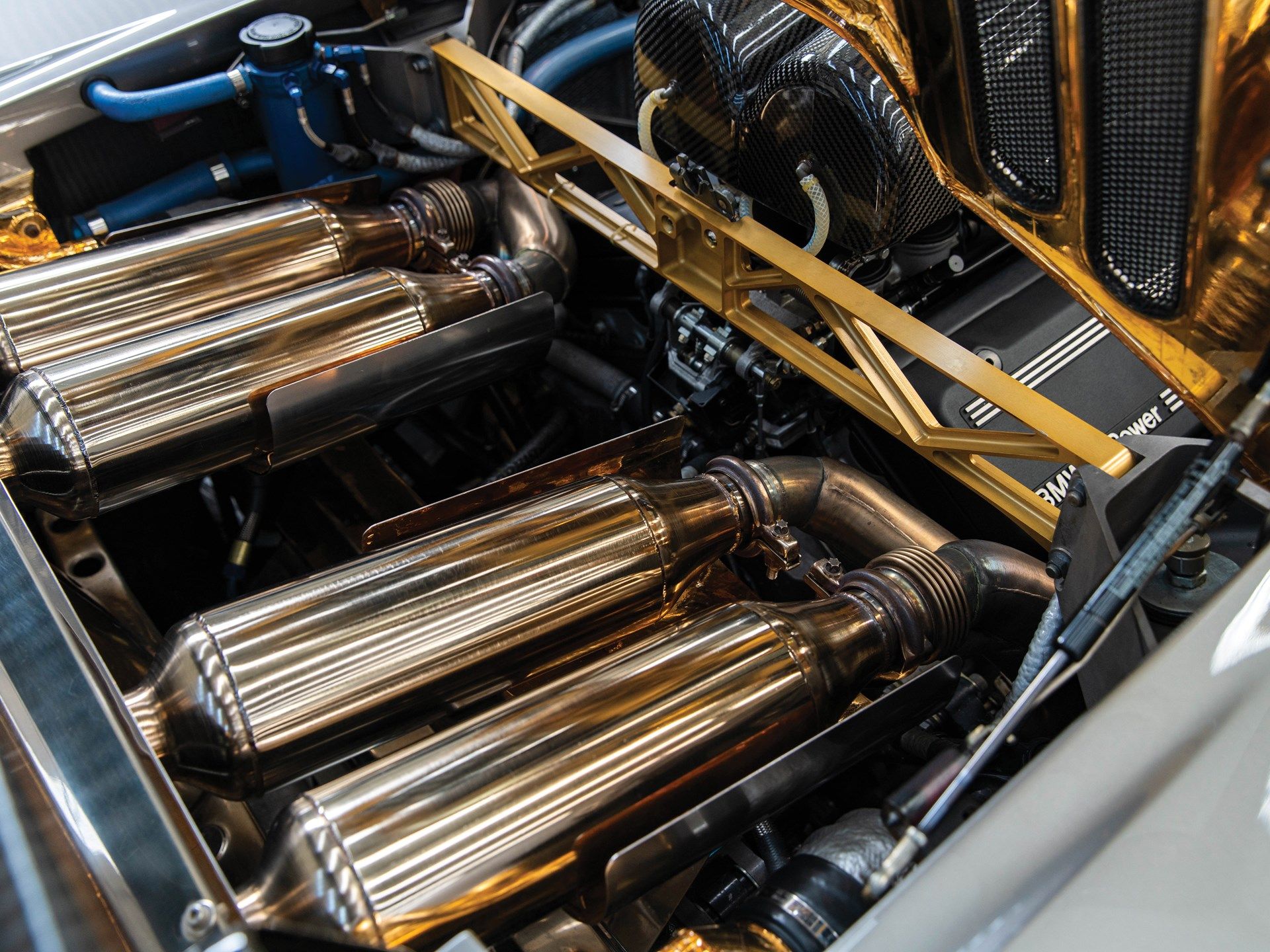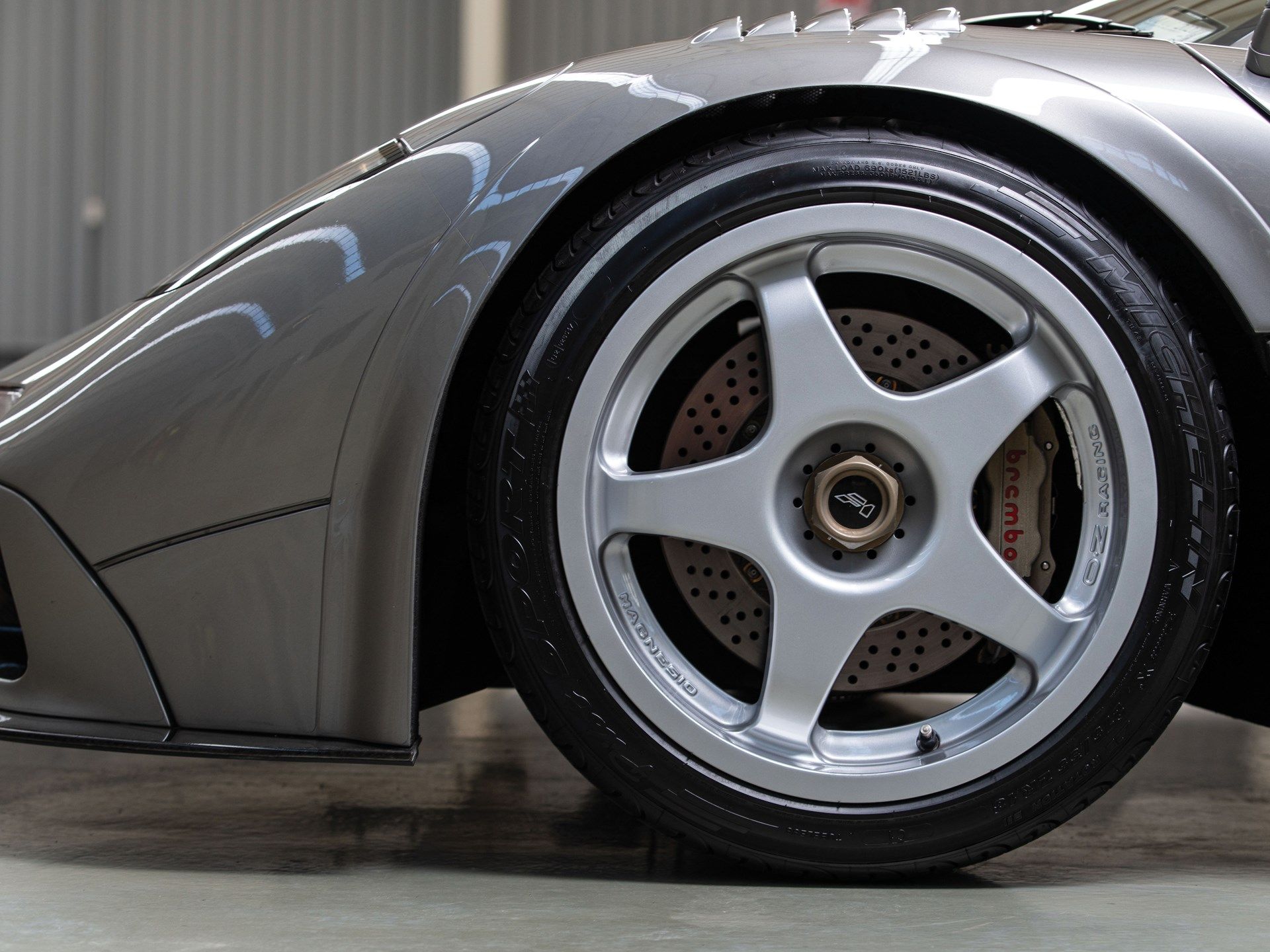Automotive journalists and gearheads have been trying to fault - even if subconsciously - the McLaren F1 ever since it was introduced over 25 years ago. In a way, it's something natural, that one desires to pick apart something that seems faultless. The McLaren F1 seems to do the job it was conceived to do flawlessly, ageing like the finest of wines from the best French vineyards. With the F40, one could argue that its spartan interior and lackluster build quality is what makes it not-so-perfect but the F1's shut lines are akin to those on the most expensive Mercedes-Benz models of the day. Is it really perfect, though? That's something you decide for yourself but what's certain is that RM Sotheby's thinks this F1 updated to LM specification is worth $23 million. If they're right, it'll become one of the most expensive cars ever sold at auction and the most expensive one sold in 2019.
The McLaren F1 is a special car, that's something that everyone can agree upon, even folks that think cars are merely means of transport created to take you from A to B. It was created by one man with a vision helped by the fact that he was given a blank check. You don't really see cost-no-object cars emerge in today's finicky auto industry but, in the mid-'90s, bolstered by a string of impressive seasons in Formula 1, McLaren thought it could do the impossible and build the supercar to top all supercars, the supercar deserving of the title 'hypercar'. Sure, many people will continue to think the supercar has reached its peak with the F40 and the F1, with its practical interior that seats three, is simply deflecting from the purest of recipes that has been applied by Nicola Materazzi when creating the F40. No matter what side of the argument you're on, this F1 in LM guise is worthy of a deeper look and, if you can, take a look at it in the flesh on the preview day before the three-day (August 15-17) auction kicks off.
Is this 1994 McLaren F1 'LM' the definitive one?
You don't usually see McLaren F1s pop up for auction. That's because they're incredibly rare, only 64 having been sold beyond the five test mules used by McLaren during the development period.
Four years ago, in 2015, RM Sotheby's brought to their big Monterey sale chassis #073, a 1998 McLaren F1 updated to LM specification by McLaren, one of only two cars to have ever received this treatment (only five LMs were built originally, in 1995, but we'll talk about them a bit later). At the time, the cherry red beauty sold for an astonishing $13.75 million but, for whatever reason, its new home was merely a place for this F1 to rest its carbon-fiber tub and bodywork as just last year it was back with RM Sotheby's that listed it as part of the 'Private Sales' program. We know it found an owner again but we don't know how much that person paid for it. While our expert appraisal of "a whole of a lotta money" is probably close to the truth, the car we're talking about today may give us a more accurate clue.
That's because now, four years after first selling chassis #073, RM Sotheby's is about to sell the other McLaren F1 updated by McLaren to LM specifications - chassis #018 built in 1994. This one isn't red but, otherwise, it benefits from all the goodies an LM would offer and then some because it was upgraded by MSO (McLaren Special Operations) in the new millennium with the latest invoices dating back to 2007.
We won't go over the F1's story again - you've heard it all before - although we will delve into the history books and look a bit at the LM version so that we can contextualize the mere existence of this car. To put it otherwise, you have to know why an LM is so special to understand why someone who owns a standard F1 would want to pay an indescribable amount of money to have it turned into an LM-spec model. But first, here's what we know about this particular car.
The car traded hands again in 2004 when it was bought by a Singapore-based collector who already owned a standard F1. Three years later, he too got bored of the car after driving it only sparingly (it currently shows just 13,352 miles on the odometer) and sold it to a New Zealander who dispatched back to Woking to be thoroughly investigated and refreshed by MSO. Since then, the car could be seen in public at least three times during three McLaren F1 tours in 2012, 2014, and, again, in 2017.
From the side, the car's most distinctive feature is its enormous fixed wing that's painted in black, thus making it even more of a magnet for the eyes. The beauty of the F1 in competition trim is that Gordon Murray actually altered his original design only minimally - which is also due to the fact that Ron Dennis only allowed him a few extra hours of wind tunnel testing to conceive the racing kit as he, Dennis, agreed begrudgingly to the customers' request for a racing version of the F1. As such, the iconic side-mounted vents with the arrow-like middle crease that blends back into the bodywork aft of the gorgeous dihedral scissor doors is still there, as on any standard F1. Likewise, the roof scoop has only been minimally altered in that it's slightly bigger.
In the back, the two-piece carbon-fiber wing is a towering presence, hanging above the stubby tail of the F1, well known for its ultra-short rear overhangs (of course, all that was changed by 1997 when the F1 GTR Long Tail was introduced to keep up with the competition but that's a different story).
Inside, the chassis #018 is very welcoming, although you'll have to be extra careful not to stain the tan leather all over, nor the cream Wilton carpeting. The central driver's seat is serviced by a pair or rear-view mirrors that help you see through the two rear windows placed on either side of the scoop on the roof that, in turn, feeds air straight to the unhinged BMW V-12 engine in the back.
Talking about the engine, this F1 brings to the table as much oomph as all of the original LM-spec cars. As such, the BMW S70/2 6.1-liter V-12 cranks out 680 horsepower at 7,800 rpm and 520 pound-feet of twist at 4,500 rpm. A standard F1's engine churns out 618 ponies while the GTR's output was capped through an air restrictor at 600 horsepower.
The LM is said to reach 225 mph, less than the 240.1 mph Andy Wallace averaged at Ehra-Lessien aboard F1 XP-5 in March of 1998 when the car officially became the world's fastest production road car. The XP-5, that's still in McLaren's possession, has been driven extensively throughout its life as an F1 test mule and is currently valued at over $23 million - will chassis #018 sell for more? All we can do right now is wait and see but what's clear is that bidders are already gathering on the Monterey Peninsula and they'll start bidding sooner than an F1 can reach 60 mph on the day of the auction (that's 3.9 seconds in the case of the LM that also reaches 100 mph in 6.7 seconds).
McLaren F1 LM specifications
|
Engine |
BMW 60-degree V-12, 48 valves |
|---|---|
|
Displacement |
6 liters |
|
Power |
659 hp |
|
Torque |
705 Nm (520 lb-ft) |
|
Power/liter |
110 hp |
|
Layout |
mid-engine, RWD |
|
0-100 km/h (62 mph) |
2.9 seconds |
|
Top speed |
362 km/h (225 mph) |
The five Papaya Orange beasts
Gordon Murray, the creator of the F1 (although the final design of the body is the work of Peter Stevens) said in his new book, 'One Formula, 50 years of car design', that "I had all this in my head (how the car should end up being) and these few sketches and all these notes to myself, I got everybody together in the boardroom and we had the infamous 101⁄2-hour meeting. Non-stop. I just said, 'This is what the car’s going to be. This is the concept – not just the design but the engineering. These are the systems; this is how big it’s going to be; this is what it’s going to look like. And it’s going to have this suspension, and it’s going to be a central driving position.'"
He also didn't care about the numbers (like so many folks in the auto industry do nowadays) that the F1 will produce. It was all about the driver, he was the central piece of the puzzle - both literally since you sit in the middle of the cabin, and metaphorically. But, in spite of his aspiration to create the ultimate road car, the commercial department did think that a racing version could produce keen interest and, as such, the possibility of building it was considered from an early stage by McLaren directors, according to then-McLaren Commercial Director Creighton Brown.
But Murray, despite his background as a racing car designer, didn't like the idea at first, begging, according to Motor Trend, McLaren Boss Ron Dennis and Mansour Ojjeh, the head of McLaren TAG, to not come back to him and ask him to turn the F1 into a race car. But that's exactly what happened, although Dennis didn't buy into the whole thing right away. What lured him in were folks with cash overflowing from their pockets demanding a race-going F1. Despite his reluctance, Murray admitted that "while there are marked differences of principle, many fundamentals also remain the same [between the road car and the race car."
In late 1994, just as the inaugural season of the BPR Global GT Series had come to an end, McLaren's plans to join the series the following year with the F1 became public. Five GTRs would be built initially and they'd comply with the rules of the GT1 class, battling against Ferrari F40s, turbocharged Porsche 911 RSRs, and a brace of Venturis among others.
Creighton Brown, McLaren's Commercial Director, told Motor Sport Magazine at the time that while the $1.44 million (in today's money) price tag of an F1 GTR is "a lot of money," at least it's "upfront and we think that the McLaren will be relatively inexpensive to run." While that may be the understatement of the century, McLaren sought to get its money back quickly having invested $3.47 million (in today's money) to develop the GTR in the first place. In the end, McLaren built no less than 28 GTRs in three years. In 1995, the GTRs squashed the competition and won 10 out of the 12 rounds of the BPR Global GT Series.
To honor the five musketeers that battled adversity (read that as 'atrocious rain showers'), McLaren built in 1995 five McLaren F1 LMs, all road legal and all sporting a Papaya Orange livery. Their engines were those of the GTRs but sans air restrictors and thus produced about 680 horsepower, a lot when you think that the whole car weighs 2,341 pounds. This is something Andy Wallace, who also did much of the testing during the short development phase of the F1 LM, reckoned that "the hardest part with the LM is getting all that power down off the line," because there's also a lot more torque, 41 torques over the 479 pound-feet of the standard version. All of that power reaches the rear wheels unassisted through a gearbox that "mixes the road car's aluminum casing with the GTR's straight-cut gears to produce an action Wallace describes as 'uncompromising.'"
How uncompromising? Well, during its 0-100-0 mph run (which we've mentioned just the other day, actually), the F1 LM with its carbon-fiber moldings for passenger seats went from naught to 60 mph in 3.9 seconds - slow by today's standards, but incredibly fast for an analog beast that loves to spin its wheels in vain. Moving on, the LM takes 2.8 seconds to go from 60 to 100 mph while the jump from 70 to 110 mph (in fifth gear no less) is achieved in one second.
What's more insane is that, at the very end of the description provided by RM Sotheby's for the grey F1 in LM specification that betters the original batch of five LMs, the author says that chassis #018 is "an extremely desirable example" as it offers all the performance of the F1 LM "at a fraction of the investment". Well, if a "fraction of the investment" equals $23 million then one has to wonder: would a genuine LM actually sell for more than a 250 GTO? While you (and us) ponder over this very tough question, we'll remind you that the most expensive GTO sold at a public auction was purchased by a bidder who put up $48.4 million while another GTO reportedly sold in a private transaction for $80 million.
Further reading
|
|
link=art182359> |
Read our full review on the 2018 McLaren F1 GTR Long Tail Restoration
|
|
link=art11027> |
Read our full review on the 1995 McLaren F1 LM
|
|
link=art3282> |
Read our full review on the 1993 McLaren F1
|
|
link=art170776> |
Read our full review on the 1997 McLaren F1 GT

